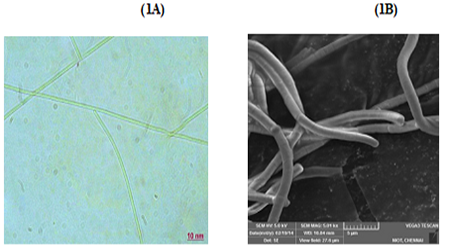


Indian Journal of Science and Technology
DOI: 10.17485/IJST/v13i41.1291
Year: 2020, Volume: 13, Issue: 41, Pages: 4307-4318
Original Article
Priyanka Srinivasan 1,2∗ , Kirubagaran Ramalingam 1, Mary Leema Joseph Thilakam1
1 National Institute of Ocean Technology (NIOT), Chennai, 600 100, Tamil Nadu, India
2 Sathyabama Institute of Science and Technology, Chennai, 600 119, Tamil Nadu, India
Corresponding author:
[email protected]
Received Date:02 August 2020, Accepted Date:09 September 2020, Published Date:24 November 2020
Background/Objectives: Zeaxanthin is a xanthophyll carotenoid revered for its role in the prevention of age related macular degeneration. The study evaluated the zeaxanthin accumulation potential of the marine Cyanophycean alga Trichodesmium thiebautii (NIOT 152). A sequential statistical technique was applied to optimize the Artificial Sea Water nutrient medium (ASN-III) components for enhancing the zeaxanthin accumulation in T. thiebautii. Methods: A two-level statistical approach involving Plackett-Burman (PB) design to screen the most important nutrients influencing the zeaxanthin accumulation followed by Response surface methodology (RSM) was employed. The results of PB design revealed sodium nitrate, disodium EDTA, magnesium sulphate and sodium carbonate as the crucial medium components for increasing zeaxanthin accumulation. Further, RSM was employed to study the interaction between these factors and identified an optimum concentration of the ingredients for higher zeaxanthin production. Findings: The optimized medium components resulted in 2.33 fold increase in zeaxanthin accumulation (4.3 ± 0.29 mg L-1) as compared to ASN III medium (1.84 ± 0.12 mg L-1). Novelty: There are only few studies on laboratory cultured Trichodesmium and only very few reports are available regarding pigment production from Trichodesmium sp. The present study successfully demonstrated the statistical optimization of ASN III medium to improve zeaxanthin accumulation by Trichodesmium thiebautii.
Keywords: ASN III medium; zeaxanthin; Trichodesmium thiebautii; Plackett-Burman; response surface methodology
© 2020 Priyanka et al. This is an open-access article distributed under the terms of the Creative Commons Attribution License, which permits unrestricted use, distribution, and reproduction in any medium, provided the original author and source are credited. Published By Indian Society for Education and Environment (iSee)
Subscribe now for latest articles and news.